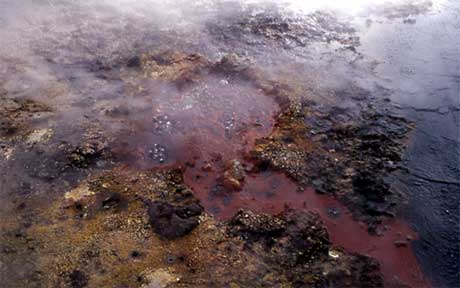
|
Lobby > Exhibits > Scientific Research > Hydrothermal Research > Vital Signs of the Earth > A Cross Section of a Hydrothermal System Hydrothermal ResearchCROSS SECTION OF A HYDROTHERMAL SYSTEM  Many millennia later, an ice cap covered the area. The weight of the ice allowed the underlying thermal water to reach higher temperatures, causing even faster alteration of the rhyolite. As the ice melted about 16,000 years ago, a colorful paleo-canyon was exhumed. Erosion, mostly by water, increased its dimensions to form the current Grand Canyon of the Yellowstone.
You need to upgrade your Flash Player
|
|
|||||||||||||||||||||||||||||||||


